[Herald Interview] Respecting food for enlightenment
Buddhist chef Wookwan writes English cookbook on temple food
By Im Eun-byelPublished : April 27, 2018 - 16:22
Considering culinary experience as part of the daily practices of Buddhism, nun-chef Wookwan strives to introduce Korean temple food to a global audience.
Temple food refers to cuisine prepared in a religious manner for Buddhism practitioners.
Today, in an age of abundance for many, the moderate food style has gained popularity, taking center stage in the global culinary scene.
Temple food refers to cuisine prepared in a religious manner for Buddhism practitioners.
Today, in an age of abundance for many, the moderate food style has gained popularity, taking center stage in the global culinary scene.
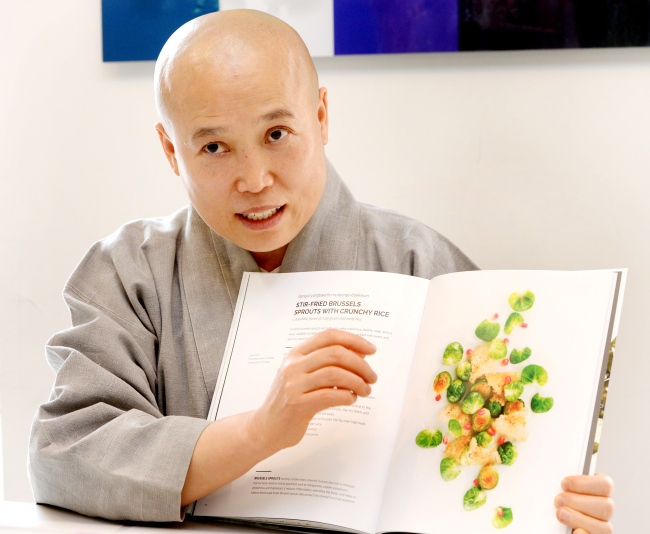
As a Buddhist nun, Wookwan from Gameun Temple has been preparing and eating temple food for a long time. But going a step further, she now showcases and lectures about the cuisine style, introducing the merits and charm of temple food.
“It’s is basically about ‘gongyang’ -- offering everything from food to thoughts for Buddha,” Wookwan told The Korea Herald at a recent interview in Seoul. “As Buddhists eat for training, preparing and eating food are part of the process of enlightenment.”
“One must reflect on which ingredients are used, where they are from, how they are prepared by whom and how they will affect the body,” she added. “Eating according to the bodily needs, rather than what the palate desires, is important.”
Food for Buddhism is largely characterized by the banning of animal products and the non-use of five pungent vegetables -- green onion, garlic, chives, leeks and onions.
Also, Buddhists must treat food with respect, even a single grain of rice. After finishing a meal, the dishes are rinsed with water and a piece of pickled radish. They must then drink the water and eat the pickled radish piece.
“But it’s not just about some rules and regulations. It’s more about the overall philosophy -- being thankful and appreciating what you have,” Wookwan emphasized.
Though she strictly eats temple food, the Buddhist keeps an open attitude toward those who are more lax about dietary restrictions.
“For health-related reasons, your body may call for meat. Rules are flexible. To be restricting is another kind of foolishness,” she said. “But differentiating the need and desire is important. A Buddhist must eat for the purpose of training for enlightenment.”
Wookwan became a Buddhist in 1988. During her training, she studied Buddhism as an academic subject at the University of Delhi in India. Though she had been comfortable with cooking from a young age, it was when she stayed at a Buddhist nursing home that she discovered joy in preparing the “right” food.
A monk suggested that Wookwan showcase her dishes at a temple food event in 2009, prompting her debut in the culinary scene. Since then, she has been spotlighted as a prominent figure in the field.
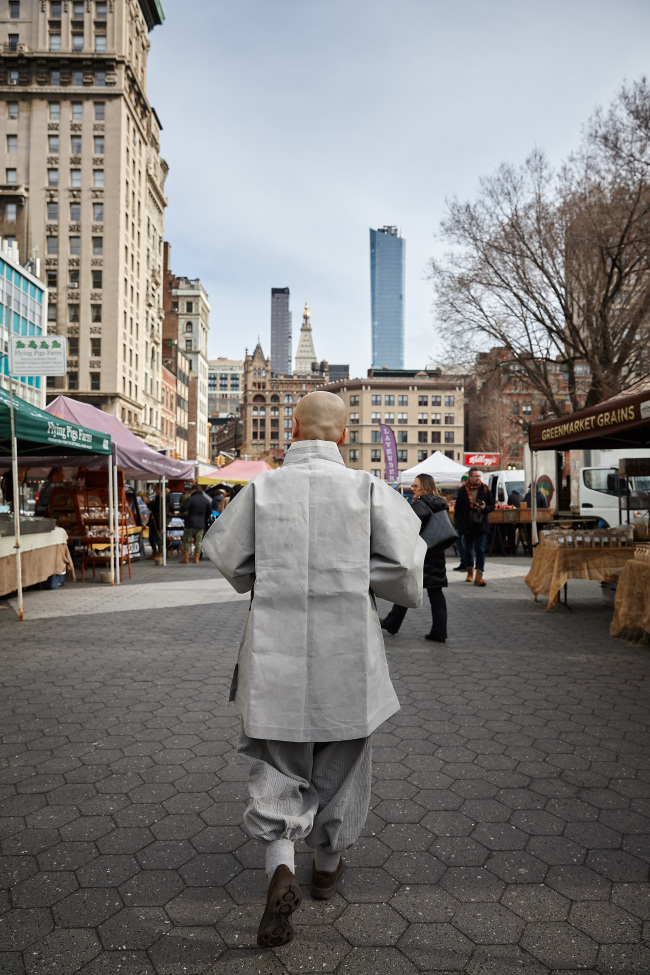
The following year, the nun chef went to New York City to exhibit Korean temple food. Since the event, she has been showcasing her food across Europe. She is currently in London, to participate in a government-organized event, preparing temple food for locals.
To effectively communicate with more people around the globe, Wookwan recently wrote a book titled “Wookwan’s Korean Temple Food.” The cookbook, written in English, introduces 41 recipes for Korean temple cuisine.
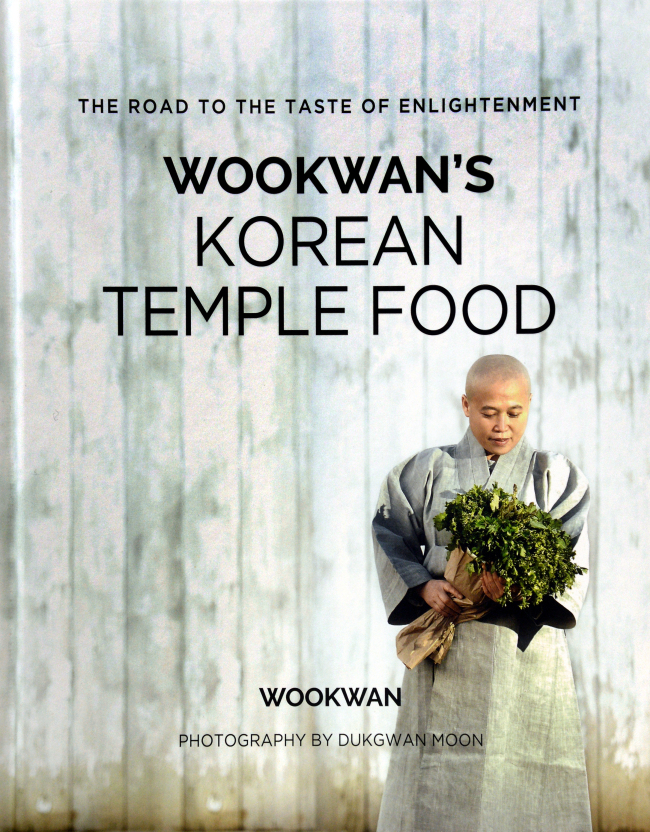
A phrase explaining Wookwan’s culinary philosophy is found on the first page of the book. “As the many waters of the world flow into the ocean to become one taste, all the flavors embrace to become the taste of enlightenment.” The phrase summarizes the Buddhist nun’s efforts to achieve the “taste of ultimate realization.”
The recipes introduced in the cookbook breakaway from commonly held prejudices against temple food, showing dishes unexpected in temple cuisine, such as coffee jelly, a nut bar and pancakes.
Wookwan has special affection for the third chapter of the book, “Taste of Harmony,” which focuses on the balance between East and West. Using diverse ingredients, such as Brussels sprouts and asparagus, Wookwan flavors the dishes with Korean sauces.
“The chapter underlines the goal of the book, harmoniously linking countries around the globe,” she said, explaining the stir-fried Brussels sprouts with crunchy rice dish. She thinks the dish most effectively explains the theme of her book.
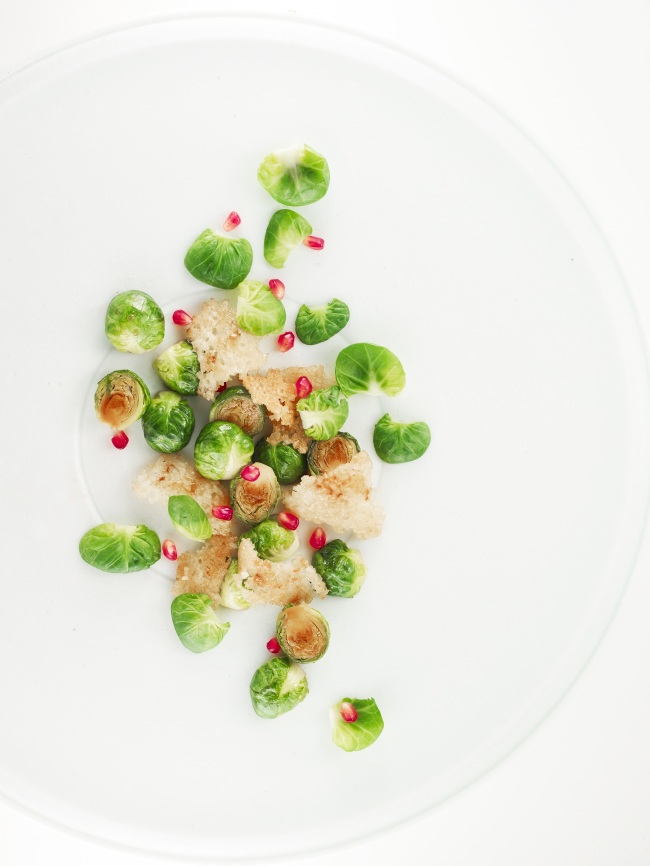
Wookwan, of course, did not forget to highlight the importance of rice, a staple for Koreans. She currently lives in Icheon, Gyeonggi Province, an area known for its high-quality rice.
She praises Icheon’s rice in the book, before introducing a recipe for sticky rice wrapped in lotus leaf, a signature dish of Korean temple food. She described the dish this way: “The scent of lotus leaves radiates through the mind and body.”
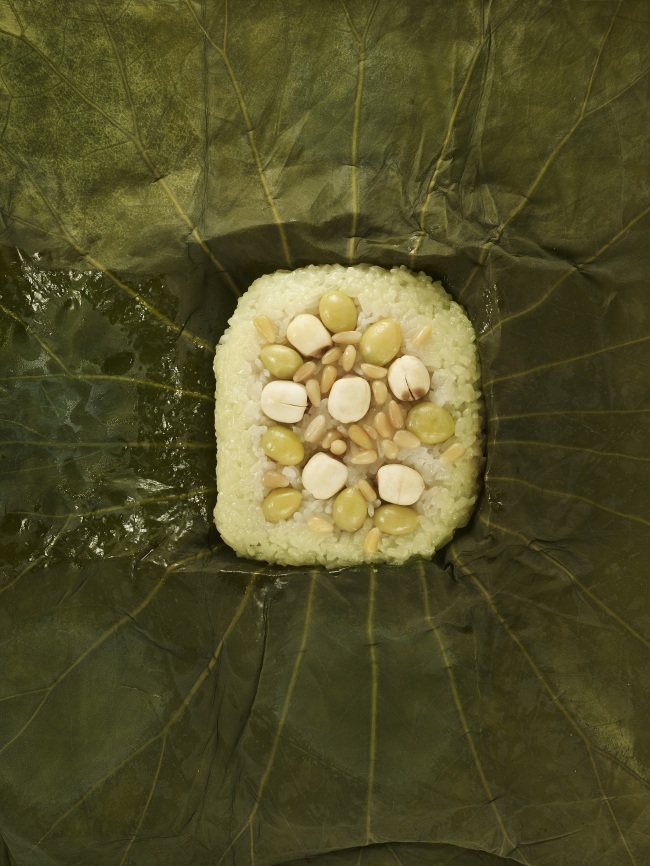
Like many other food experts, Wookwan counts “devotion” as the key factor to taste. For instance, a braised eggplant with cherry tomatoes dish was created with careful consideration.
“A couple of monks, who are like teachers to me, visited one day without notice. There wasn’t anything but eggplants on hand. As the monks are old, I decided to braise the eggplants to make them soft,” she recounted.
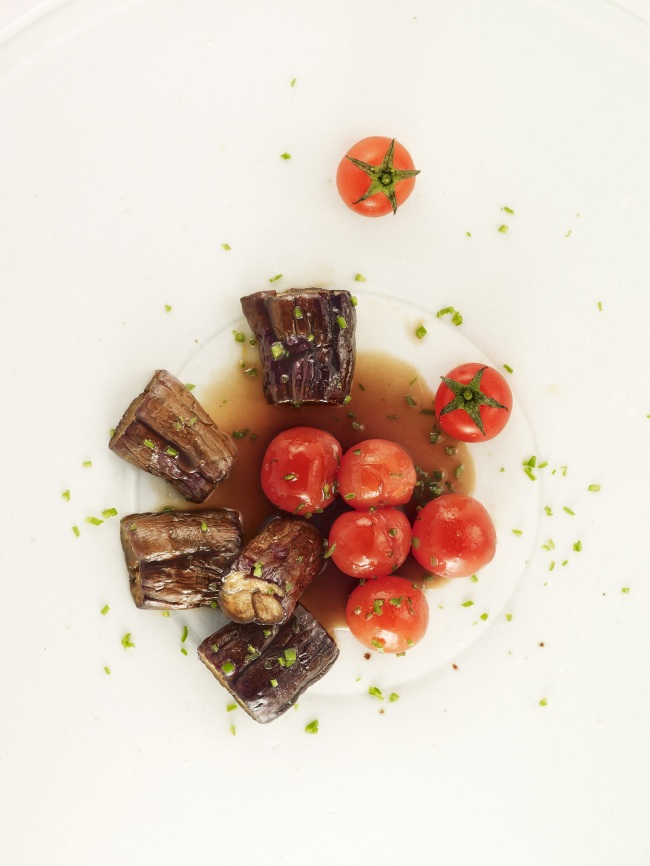
One of the monks asked her, “What is this dish? What did you do to make it taste so good?” Her answer was simple, “I prepared it with my heart.”
Recently, temple food has risen as a popular culinary practice across Europe and America. Wookwan says “timing” is the reason behind its popularity. From her perspective, however, it will take a while for the food to appeal to the wider public in Korea.
“Culinary culture has abruptly changed in recent years. It hasn’t been long since we overcame the difficulties of eating for survival,” she said. “But not for westerners. They have been eating well for a long time. It’s time to eat with value, so they are turning to temple food.”
Wookwan went to Spain in 2015 to showcase temple food. She still remembers a comment made by a person in the country. Complimenting her dish, the person said, “You are going to be even more famous than McDonald’s.”
“I am not a business person. For me, this is about introducing Korea to foreigners,” she said, laughing off the compliment. “If more people can know and appreciate temple food, I have fulfilled my mission.”
In the future, the Buddhist chef wishes to start a small culinary institute for temple food, guiding locals and foreigners on the cuisine of moderation.
"It doesn’t have to be big and grand. If I am able to communicate with one person who sincerely wishes to learn from me, and encourage development and progress, that would be enough,” the Buddhist said.
“I would like to sit down with the person and perform a tea ceremony and food meditation. That would be my way of repaying Buddha’s grace.”
The cookbook “Wookwan’s Korean Temple Food” will be released on May 7.
(silverstar@heraldcorp.com)








![[KH Explains] How should Korea adjust its trade defenses against Chinese EVs?](http://res.heraldm.com/phpwas/restmb_idxmake.php?idx=644&simg=/content/image/2024/04/15/20240415050562_0.jpg&u=20240415144419)











![[Today’s K-pop] Stray Kids to return soon: report](http://res.heraldm.com/phpwas/restmb_idxmake.php?idx=642&simg=/content/image/2024/04/16/20240416050713_0.jpg&u=)